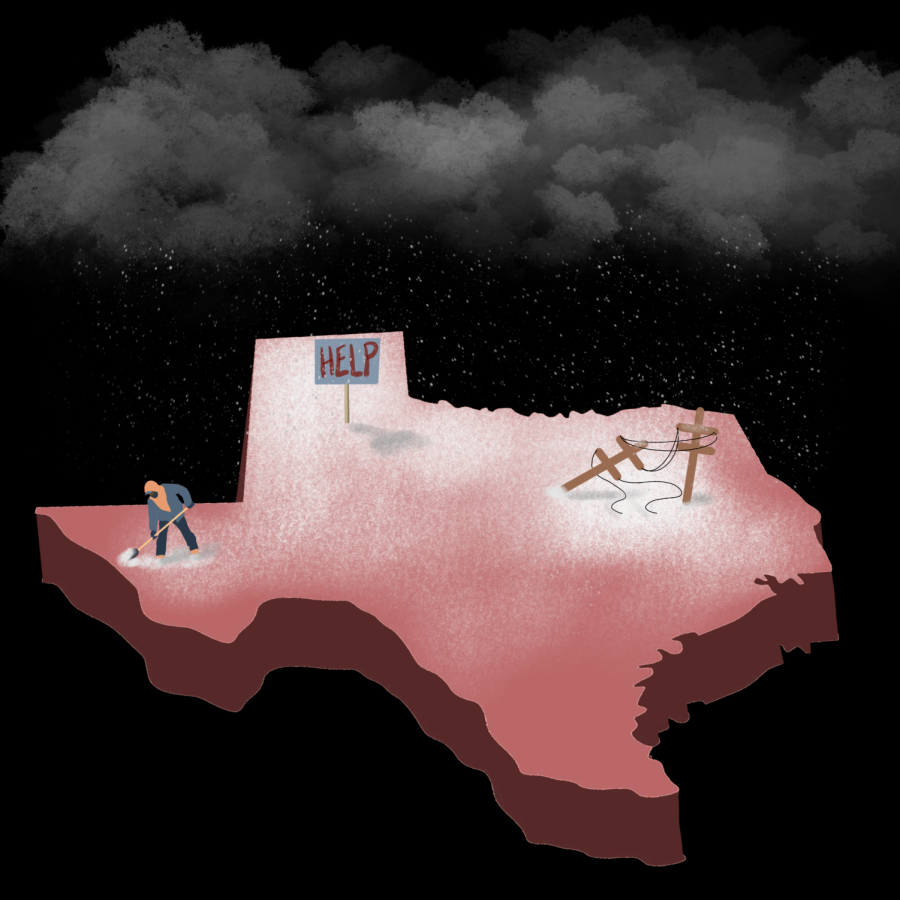Blaming renewable energy is not the answer
February 24, 2021
What began less than two weeks ago as unprecedented frigid weather in Texas has twisted into a disastrous energy crisis resulting in the death of over 80 people. Millions were deprived of power, and the recovery has been slow. Due to the increased demand and loss of energy, many stores were unable to remain open, contributing to massive food shortages. Water systems were rendered non-operational as a result of burst or freezing pipes, leading some in San Antonio to collect river water with emptied trash cans. This has been a devastating event, and in response U.S. President Joe Biden declared a statewide emergency, authorizing FEMA and the Department of Homeland Security to provide assistance. But, this turbulent period in the state remains ongoing, and it has raised clear concerns not only about the preparedness against such a storm, but also about the systems of infrastructure that so many in Texas are reliant upon.
By the manner in which the storm so heavily affected the impacted areas, one might assume that no one saw it coming, and that the state was taken by surprise. Indeed, Texas was afflicted with cold temperatures the likes of which had never been seen there, even falling to below zero in certain cities. Yet, the devastating forecast had been known by several operators in Texas’ electrical grid over a week in advance, time that could have been used to take critical preventative measures against what would inevitably arrive. Moreover, the potential for a winter storm in the state had often been raised as a concern going so far back as 2011, when similar weather hit Texas and caused outages.
But these warnings were mostly ignored in favor of leaving the responsibility to the power companies, who, in large part, avoided the additional expenditures of “winterizing” their power plants and gas production. This lack of enforcement has been primarily the fault of Texas’ deregulated power grid, which not only incentivizes power companies to spend as little as possible, but also prevents the state from importing energies from other states in situations where it is most needed.
Indeed, such glaring flaws in the state’s energy systems have been overlooked by some politicians, who instead have accused renewable energy of being the predominant cause of the events in Texas. Governor Greg Abbot claimed that wind turbines were to blame, despite the fact that renewable power sources contribute only around one-fifth to Texas’ power grid, and that natural gas facilities, as Abbot later admitted, also lost significant amounts of power. Yes, there were frozen wind turbines, just as there were frozen pipelines in natural gas facilities. But the issue did not stem from one power source, and it is disingenuous to suggest that there was. Rather, record demands of energy and poor systems of infrastructure are to blame.
The truth is that renewable energy is not a boogeyman that can be blamed for whenever an energy crisis occurs. It cannot be the Green New Deal, a proposal without any legal effect, that can be simply labelled as “deadly” by the governor without merit. There are clear issues that contributed to the poor response in Texas, and they can not simply be avoided by leaving it to the power companies on a deregulated grid or by flying off to Cancun, Mexico.






















Kim Scott • Feb 27, 2021 at 5:09 am
I came here via the graphic on an image search, and found a concise article telling the biting truth. I am no expert, but I’ve read dozens of articles on this disaster, and I live in with a deregulated energy market in Alberta, Canada. I don’t like it. This is an incisive summation of the situation. Thank you.